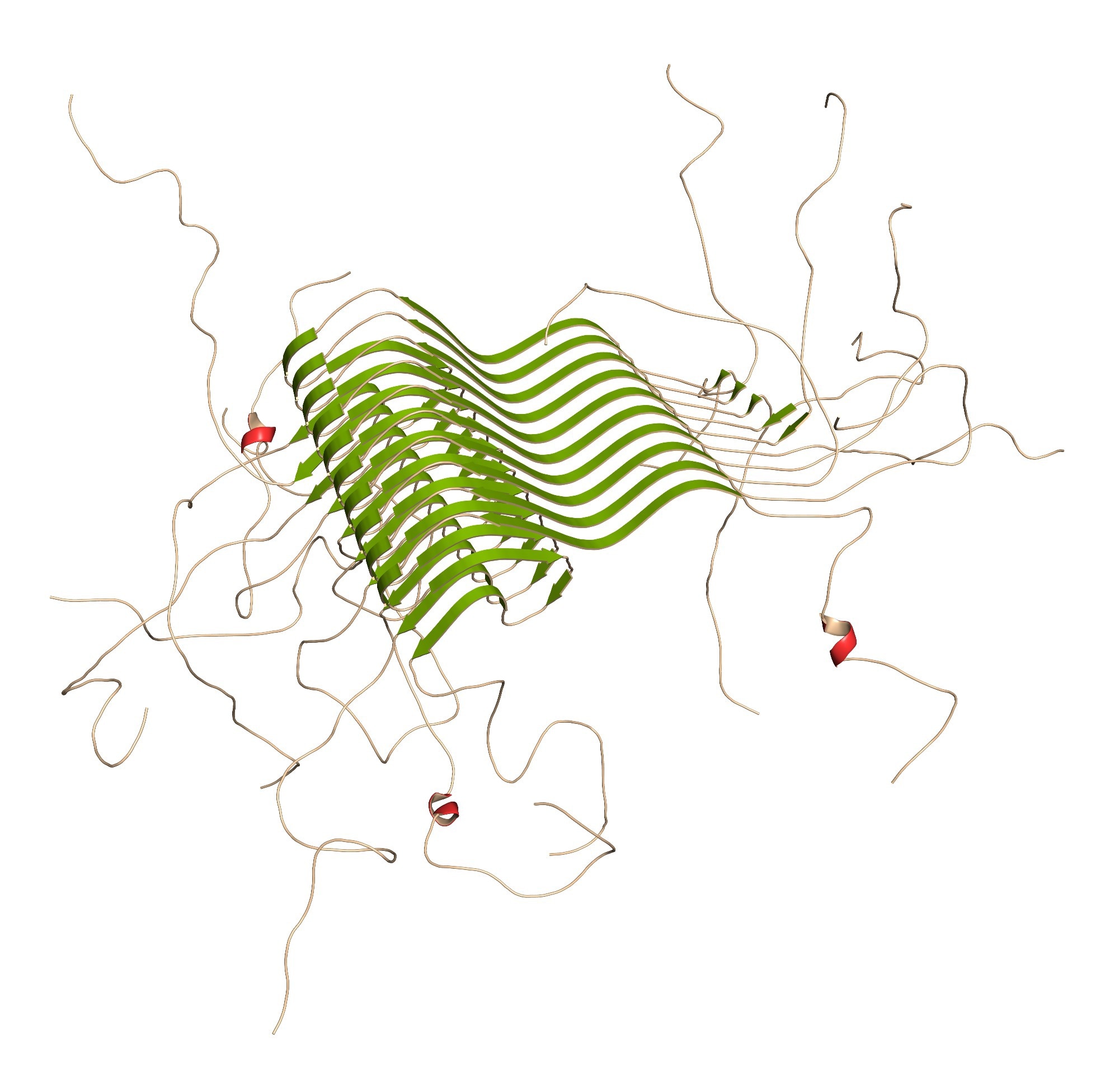In a recent study published in the Proceedings of the National Academy of Sciences, researchers assessed the capability of two small molecules of disintegrating alpha-synuclein fibrils.
 Study: Small molecules disaggregate alpha-synuclein and prevent seeding from patient brain-derived fibrils. Image Credit: StudioMolekuul/Shutterstock
Study: Small molecules disaggregate alpha-synuclein and prevent seeding from patient brain-derived fibrils. Image Credit: StudioMolekuul/Shutterstock
Background
Parkinson's disease (PD), dementia with Lewy bodies (DLB), and multiple system atrophy (MSA) are neurodegenerative conditions defined by the aberrant accumulation of a protein called alpha-synuclein. This disordered protein makes it difficult to determine its atomic structure in soluble form. Primary and seeded alpha-synuclein aggregation has become a major treatment focus for synucleinopathies. Antibodies that bind alpha-synuclein aggregates and small compounds that bind monomers and limit initial aggregation are currently under research.
About the study
In the present study, researchers presented small molecules with the ability to disassemble preformed alpha-synuclein fibrils.
The team studied the structure of epigallocatechin gallate (EGCG) bound to tau-paired helical filaments (PHFs) isolated from the brains of Alzheimer's disease patients. EGCG pharmacophore was identified and a putative mechanism for EGCG disaggregation was presented based on its structure. The EGCG pharmacophore was employed as a docking site to computationally screen approximately 60,000 small molecules that were predicted by their biophysical features to favorably penetrate the central nervous system (CNS). From this screening, the team identified chemicals capable of disassembling tau PHFs, including CNS-11. Furthermore, the researchers attempted to establish if CNS-11 exclusively disaggregated tau fibrils or if it had a broader effect on amyloid fibrils.
The team examined ten chemical analogs of CNS-11 to determine if their qualities were similar. Next, the ability of CNS-11g and CNS-11 to dissociate in vitro alpha-synuclein fibrils was assessed. The samples were treated with thioflavin T (ThT) which was a fluorescent marker for amyloid fibrils, and ThT fluorescence was evaluated. To determine if CNS-11 or CNS-11g affected primary alpha-synuclein aggregation, a ThT aggregation kinetics test was conducted.
Based on their biophysical features, it was projected that CNS-11 as well as CNS-11g would have good brain permeability. To determine the compounds' brain permeability, C57BL/6J mice were injected in the tail vein with 1 mg per kg of body weight of the molecules.
Results
The study results showed that CNS-11 and its chemical counterpart CNS-11g had a significant impact on alpha-synuclein fibrils. There was a significant decrease in insoluble alpha-synuclein in CNS-11g analog-treated fibrils. All three studied drugs exhibited a reduction in ThT signal, indicating a decrease in fibril quantity. The fibril count in CNS-11- and CNS-11g-treated samples was reduced qualitatively. Furthermore, a decrease in the number of visible fibrils was noted for both compounds, but especially for CNS-11g.
There was a slight difference between allowing alpha-synuclein to assemble in the presence of CNS-11 or CNS-11g. When fibril seeds were treated with CNS-11g or CNS-11, the elevation in aggregation time was mitigated, probably due to the preformed fibrils. The fluorescently labeled alpha-synuclein remained soluble at baseline. However, transduction of exogenous alpha-synuclein fibrils mediated by liposomes into the cells elicited aggregation of the indigenous protein, which can be observed and quantified within the cell as fluorescent puncta.
Postmortem fibrils of alpha-synuclein were isolated from the brain of an MSA patient and assessed. Using immunogold labeling, the brain-derived fibrils were verified to be alpha-synuclein. The team noticed a decrease in the mean number of imaging fibrils for CNS-11g and CNS-11 relative to the control. Additionally, there was a decrease in fibril length as MSA fibrils treated with CNS-11 and CNS-11g exhibited a 25% decrease in mean fibril length.
HEK293T biosensor cells are strongly seeded with intracellular alpha-synuclein by MSA-derived fibrils. At submicromolar concentrations, a considerable reduction in intracellular seeding was observed for the three compounds, with CNS-11g and CNS-11 exhibiting comparable efficacy to the control EGCG. These results revealed that these drugs may disaggregate brain-derived MSA fibrils and that fibrils pretreated with CNS-11 and CNS-11g were incapable of seeding intracellular alpha-synuclein aggregation.
Additionally, one hour after an injection of the compounds in the mice showed plasma concentrations of CNS-11 and CNS-11g between 2.5 and 11.7 ng/mL for CNS-11 and 5.2 and 23.5 ng/mL for CNS-11g. Moreover, CNS-11 and CNS-11g exhibited cerebral permeability. In the brain tissue, their concentration ranged between 5.7 and 17.8 ng/g for CNS-11 and 3.5 and 25.5 ng/g for CNS-11g.
Conclusion
The study findings highlighted the capacity of two drugs to deconstruct alpha-synuclein. Additionally, the study demonstrated that the chemicals are efficient against alpha-synuclein fibrils found in patient brain tissue and can effectively enter living brain tissue in mice. Further validation is required to verify their therapeutic efficacy. However, these preliminary findings indicate the possibility of these compounds as future drug development leads for the treatment of synucleinopathies.